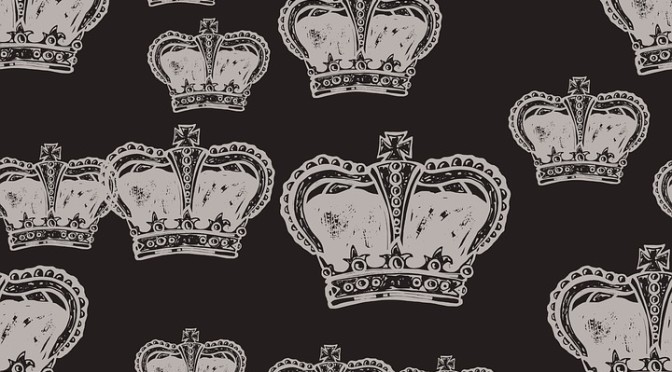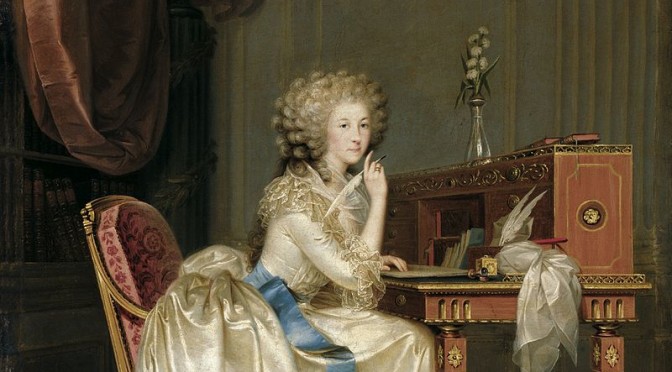Thank heavens Marie-Antoinette and Louis XVI married!

The marriage of Louis and Marie-Antoinette would bring hope to future generations.
Unfortunately, Louis inherited the last king’s heavy debts. His grandpa and great-grandpa also left the royal court in a disgusting state. It was embarrassing. Fortunately, he had a good companion by him. He was fifteen when he married fourteen-year-old Marie-Antoinette. It was good for the people and for them.

For The People
American Power Couple
Marie-Antoinette and Louis were not Americans, but let’s face it–none of Americans’ founders were technically born United States citizens.
Louis provided supplies and military forces for the needy Americans and Marie-Antoinette was supportive and involved. I include the power couple among the founders of the United States. When I look at the list of American founders, I am embarrassed with the loose morals of some of them. I’m proud that Louis and Marie-Antoinette held on to their high standards. In a way, they remind me of Abigail and John Adams in the fact that they were also a power couple that helped America become great.
I believe the marriage of Marie-Antoinette and Louis XVI was literally a match made in heaven. I’m very serious, and we should sincerely thank heaven for their marriage. Americans would not be enjoying freedom–or perhaps not be Americans at all–if it had not been for Marie-Antoinette and Louis.
The People’s Champions
You can say that the Queen and King were interested in freedom in general. He played tug-a-war with nobility. He wanted them to pay higher taxes to benefit the poor. Some of Marie-Antoinette’s stand out projects included a safe haven for unwed mothers and educating the less fortunate children with her own. The King and Queen were generous with their own personal funds. Marie-Antoinette and Louis were very aware of France’s needs. They were true Christians who practiced what they preached.
 For Them
For Them
In the Beginning
They had a beautiful relationship. At first there was none–they were strangers. Plus, like many other in the French royal court, Louis was leery about an Austrian becoming queen of France someday. But gradually over time, they established a friendship, and eventually it went beyond that.
It’s mystified the past and present why Marie-Antoinette and Louis didn’t consummate the marriage right away. Some have thought of legit reasons and some are downright disrespectful and crude.
Whatever it was, here’s a simple fact:
Marie-Antoinette was fourteen and Louis was fifteen years old when they got married.
My conclusion:
Come on! They were much too young!
Forget royal expectations of starting a family right away. Whether or not they were attracted to another, both were still getting to know their own bodies. I think it’s very probable that it wouldn’t have felt natural for these two individuals at this age. It would have been premature. Meanwhile they were developing a friendship.

Aw…Dauphin Louis Auguste in 1769. A year later, he would marry Marie-Antoinette. Some negatively used “the Austrian” to describe her.

King Louis XVI at age 21 around 1776. Tall and well-built, he surely knew by now that Austria wasn’t that bad.
I think the timing of the intervention by the Emperor of Austria, Marie-Antoinette’s brother, was perfect.
By now–seven years after their wedding– the couple was more ready for his frank talk. The couple soon acted like newlyweds and started a family the next year.
Marie-Antoinette was twenty-three and Louis was twenty-four years old when their first child was born. Much more natural.
In short and in order they were strangers, then friends, and then lovers.

Marie-Antoinette took an interest in hunting, one of her husband’s favorite activities. Here she is looking adorable in hunting clothes at 16.

Here Marie-Antoinette is painted in her 1778 hunting garb. She would be a mother by the end of the year.
Throughout the Marriage
I believe they were faithful to another. Believe it or not, sensational storytellers, couples don’t have to be mushy to love each other. In the royal couple’s jobs and in child-rearing, they showed support one toward another.
I’m amazed the couple stuck by each other despite terrible and bogus rumors constantly surrounding them. Their love was shown through respect. That example of loyalty extended to their children and Louis’ sister. It reminds me of what Jeffrey R. Holland said, “The crowning characteristic of love is always loyalty.” That’s what Marie-Antoinette and Louis’ union and legacy are actually about.
Families Are Forever
The Bourbons’ writings in prison are touching and revealing of their deepest beliefs. Marie-Antoinette’s last letter is written to her sister-in-law, Elisabeth, and it is heart wrenching, but also full of hope. In regards to her late husband, she writes:
“I have just been condemned, not to a shameful death, for such is only for criminals but to go and rejoin your brother. Innocent like him, I hope to show the same firmness in my last moments.”
There’s tremendous comfort in Marie-Antoinette’s belief of being reunited with loved ones and family. She continues, “Where can one find friends more tender and more united than in one’s own family?”
Marie-Antoinette and Louis’ daughter, Marie-Therese, wrote her thoughts on the walls of the Temple prison, and you can feel her emotion and know she believes that she’s being watched over. The following tells how she feels about the afterlife, her parents’, and God:
“Live, my good mother! whom I love well, but of whom I can hear no tidings. O my father! watch over me from heaven above, O my God, forgive those who made my parents suffer!”
Marie-Antoinette and Louis believed and also instructed their children to forgive. One could argue the couple wasn’t always on the same page but they were always in the same book in the sense they shared the same faith and spiritual beliefs as well as doing all they could to better children and country.

Fitting In
It’s hard to categorize the couple into one group. They weren’t your typical American patriots and they didn’t agree with all the royals’ lifestyles either. In that way they are odd. But you chip away their positions, though, and you’ll find they’re not so weird.
It’s time accept Marie-Antoinette and Louis were a good fit for each other, and they were a a very normal couple.

Sources:
Holland, Jeffrey R. “The First Great Commandment.” Www.lds.org. The Church of Jesus Christ of Latter-Day Saints, Oct. 2012. Web. 9 Aug. 2016. <https://www.lds.org/general-conference/2012/10/the-first-great-commandment?lang=eng>.
“Louis XVI of France” Wikipedia: The Free Encyclopedia. Wikimedia Foundation, Inc. 7 Aug 2016. Web. 9 Aug. 2016.
“Marie Antoinette.” Wikipedia: The Free Encyclopedia. Wikimedia Foundation, Inc. 8 Aug. 2016. Web. 9 Aug. 2016.
“Marie-Therese” Wikipedia: The Free Encyclopedia. Wikimedia Foundation, Inc. 12 July 2016. Web. 9 Aug. 2016.
Vidal, Elena Maria. “Last Letter of Marie-Antoinette.” Tea at Trianon. N.p., 26 May 2007. Web. 9 Aug. 2016. <http%3A%2F%2Fteaattrianon.blogspot.com%2F2007%2F05%2Flast-letter-of-marie-antoinette.html>.
Images:
Featured image: Coronations commemorative medallions of Louis XVI and Marie Antoinette. Pd-Old.
Engraving of the wedding of Louis XVI & Marie Antoinette. {{PD-1923}}
Portrait of Louis XVI of France by Joseph Duplessis. 1776.{{PD-1923}}
Picture of Louis XVI, Marie-Antoinette talking to her brother by Joseph Hauzinger.
Archduchess Maria Antonia of Austria, the later Queen Marie Antoinette of France, at the age of 16 years by Joseph Kreutzinger, 1771. {{PD-1923}}
Queen Marie Antoinette of France, 1778 either by Antoine Vestier or Jean-Baptiste André Gautier-Dagoty. {{PD-1923}}





























